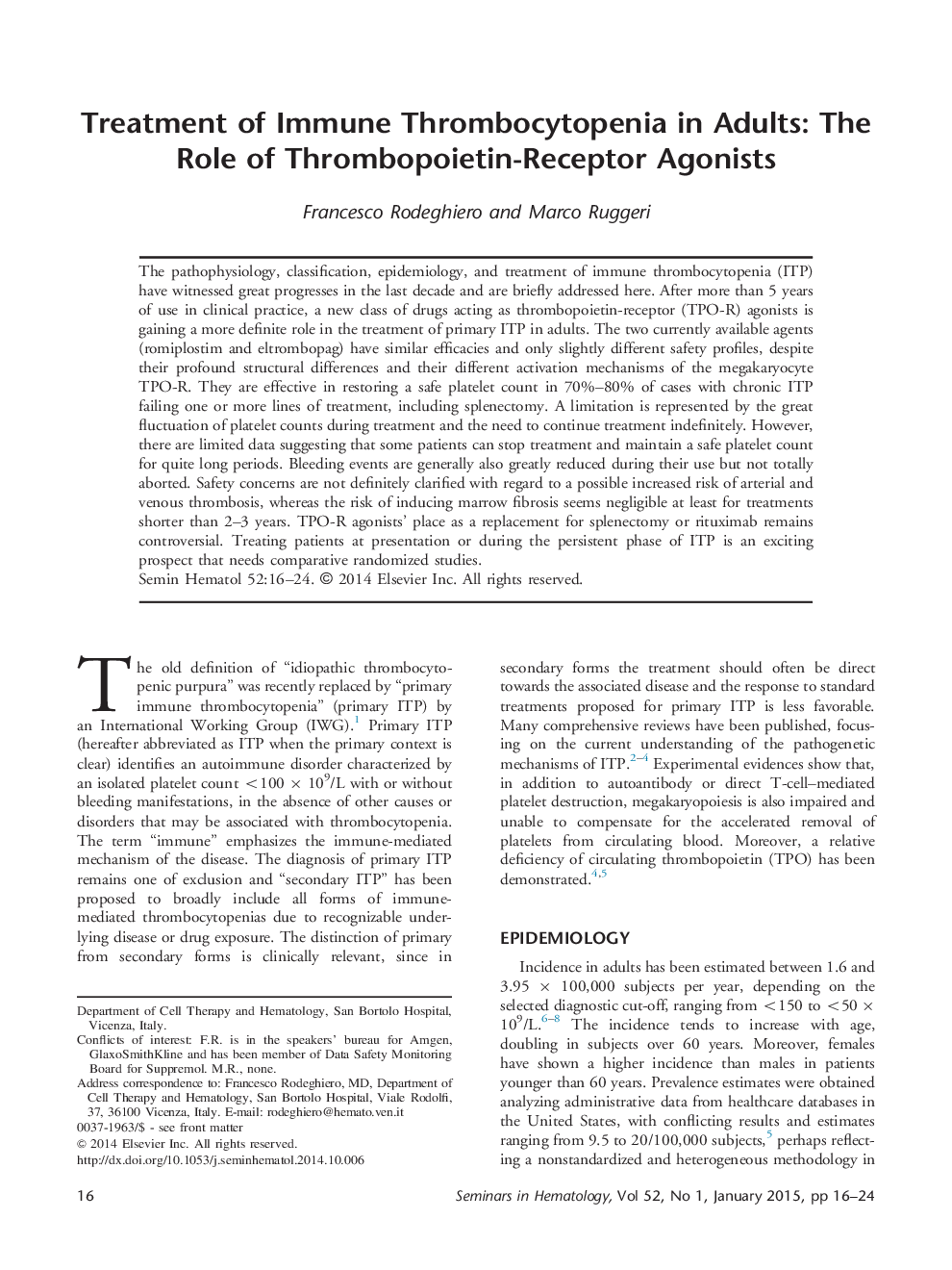| Article ID | Journal | Published Year | Pages | File Type |
|---|---|---|---|---|
| 3333492 | Seminars in Hematology | 2015 | 9 Pages |
The pathophysiology, classification, epidemiology, and treatment of immune thrombocytopenia (ITP) have witnessed great progresses in the last decade and are briefly addressed here. After more than 5 years of use in clinical practice, a new class of drugs acting as thrombopoietin-receptor (TPO-R) agonists is gaining a more definite role in the treatment of primary ITP in adults. The two currently available agents (romiplostim and eltrombopag) have similar efficacies and only slightly different safety profiles, despite their profound structural differences and their different activation mechanisms of the megakaryocyte TPO-R. They are effective in restoring a safe platelet count in 70%–80% of cases with chronic ITP failing one or more lines of treatment, including splenectomy. A limitation is represented by the great fluctuation of platelet counts during treatment and the need to continue treatment indefinitely. However, there are limited data suggesting that some patients can stop treatment and maintain a safe platelet count for quite long periods. Bleeding events are generally also greatly reduced during their use but not totally aborted. Safety concerns are not definitely clarified with regard to a possible increased risk of arterial and venous thrombosis, whereas the risk of inducing marrow fibrosis seems negligible at least for treatments shorter than 2–3 years. TPO-R agonists’ place as a replacement for splenectomy or rituximab remains controversial. Treating patients at presentation or during the persistent phase of ITP is an exciting prospect that needs comparative randomized studies.
